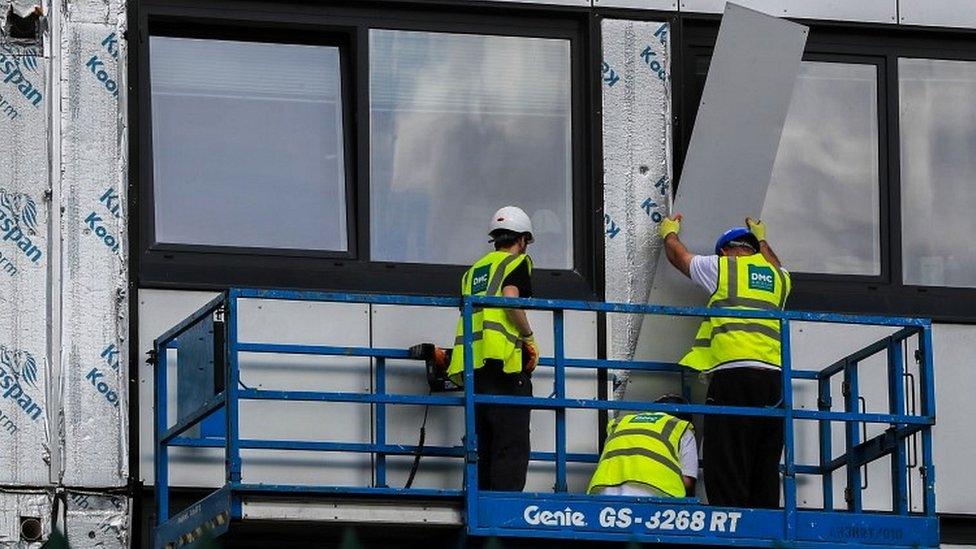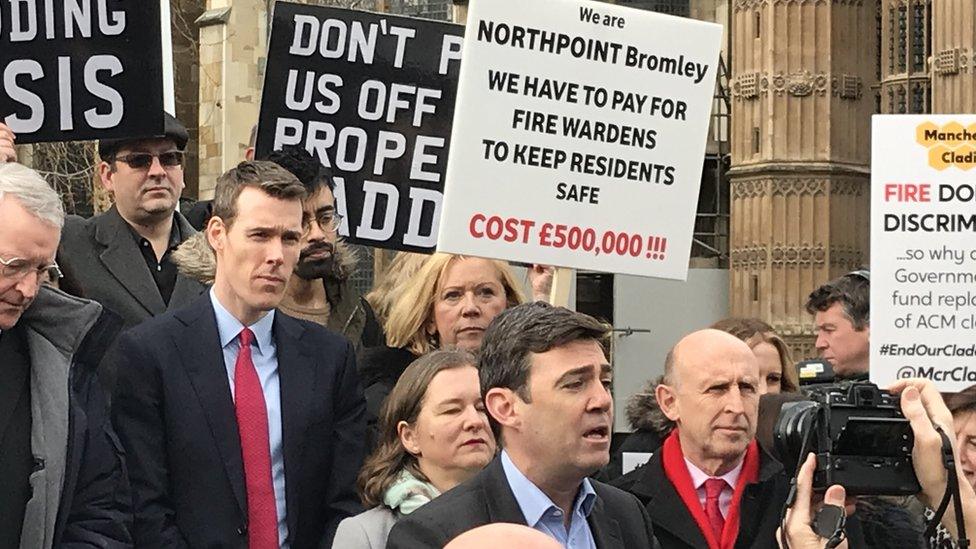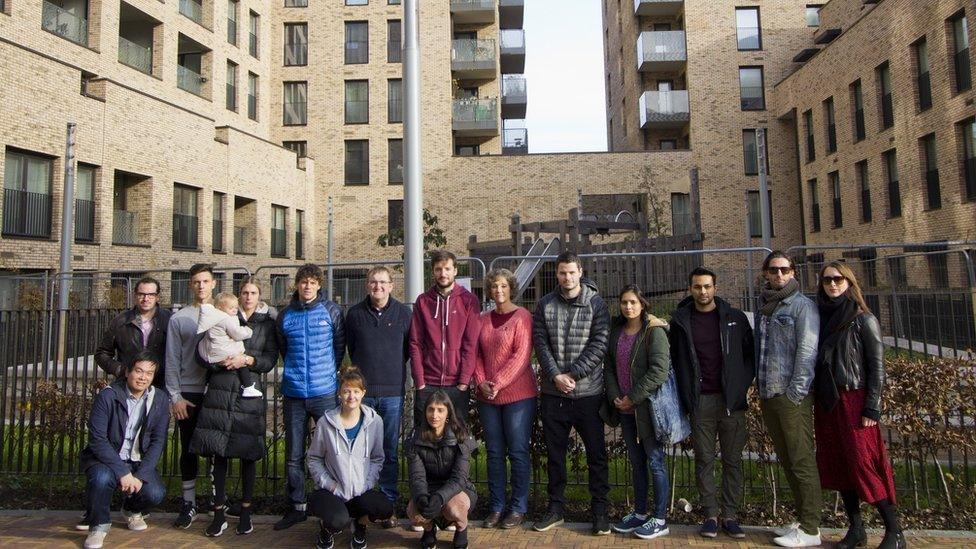Replacing unsafe cladding in London 'will cost £4bn'
- Published

London's housing associations have identified over 2,000 buildings which need to be rectified
Replacing unsafe cladding on buildings in London will cost £4bn, the capital's housing associations estimate.
The G15, made up of the city's largest housing associations, has identified over 2,000 buildings to be rectified.
They have called on the government to foot the bill, saying unsafe cladding was a "systematic failure" that "should be dealt with at a national level".
The government, which announced another £1bn for the issue, said "residents' safety remains our priority".
Leaseholders who own flats which have unsafe cladding have spoken about being "trapped in worthless homes".
Scott Jenkins, who lives in a building fitted with timber cladding which may need to be removed, said he had been left in "complete limbo" by the situation.
"This all happened really fast. Everyone's making it up as they along," he said.

Scott Jenkins lives in a building which has been fitted with timber cladding
The housing associations who make up the G15 believe the fact it is a nationwide issue, and the number of buildings involved, means that the government should pay to replace unsafe cladding.
"If we use our resources to remediate defective buildings then that is going to be less money available to build new homes which are also desperately needed across the country," said G15 Chair Helen Evans.
The government previously announced £600m was being made available to remove and replace high risk aluminium composite material (ACM) cladding which is what was used on Grenfell Tower.
During Wednesday's budget, the chancellor said another £1bn would be made available "to fund the removal and replacement of unsafe non-ACM cladding systems".

Unsafe cladding became a major national concern after the Grenfell Tower fire
In a statement, the Ministry of Housing, Communities and Local Government said the government "has taken urgent action on building safety".
"Residents' safety remains our priority."
- Published25 February 2020

- Published8 February 2020

- Published15 November 2019
